There’s something about urban life.
By Slam Jam
@slamjamYou walk out your door, and you’re immediately in a steady stream of life happening all around. As it turns out this stream of life does shape you in numerous ways. To recognize what moves and inspires the Milanese one needs to dig deeper and go beyond the surface.
There aren’t many entities that have such a deep connection and knowledge of youth subcultures and their influences as Luca Benini’s street-rooted lifestyle powerhouse Slam Jam. In partnership with Slam Jam we spoke to a diverse spectrum of drivers of the city that play a crucial role in shaping Milan’s cultural landscape in all its facets.
From skating in Milan, its city development, to the housing blocks on the outskirts, this guide provides insights for both, visitors and locals, to explore the city from a different angle.
To celebrate our Excursions Milan partnership, Slam Jam and StockX have collaborated on a Slam Jam x StockX (Un)Corporate Uniforms T-Shirt. Available in limited quantities only on StockX from December 16, 2021. Click here to purchase it now.
What Happens in the Streets Stays in the Streets
@PeterWassili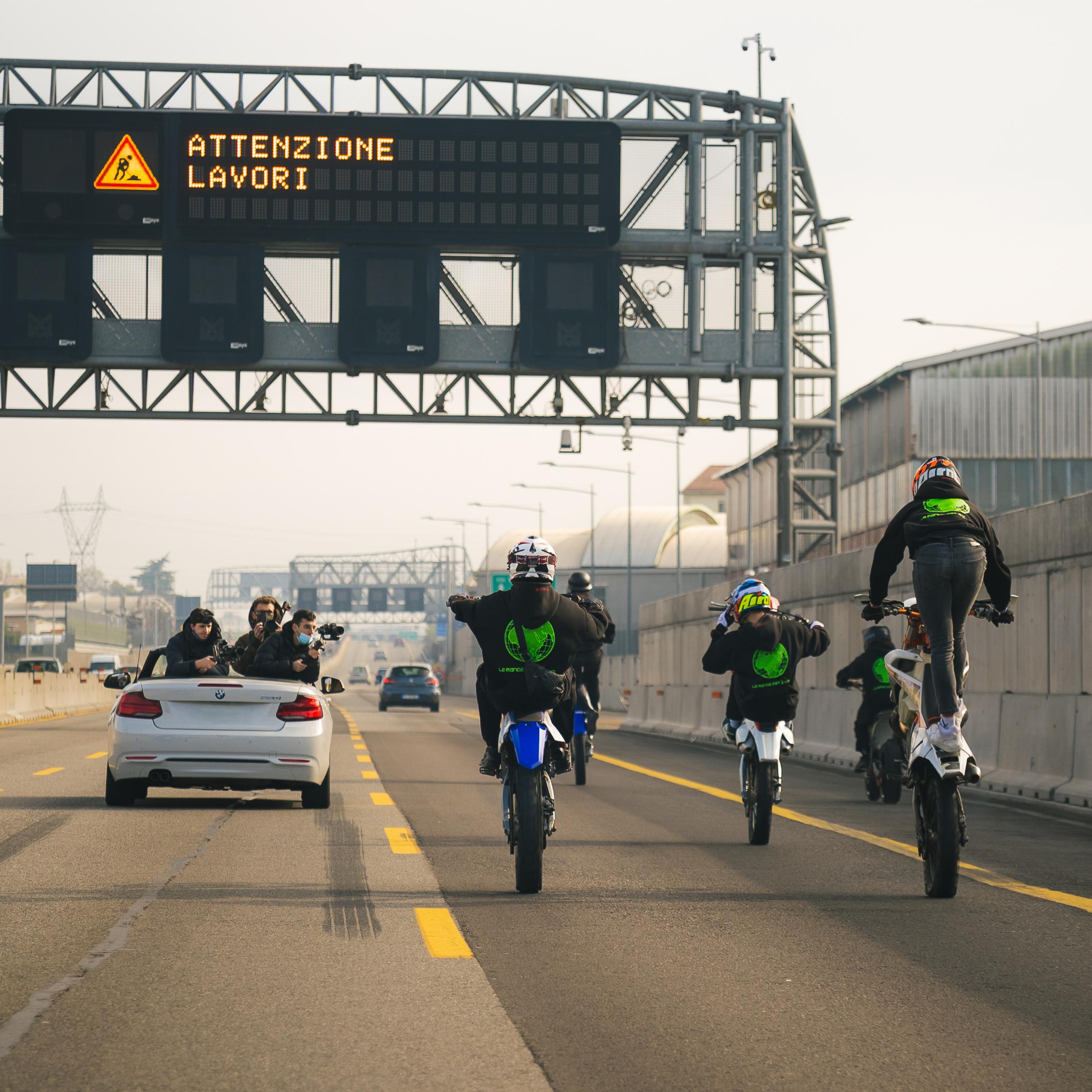
Photo credit: @lele.lamb
I’m Peter Wassili, I’m 22 and I’m from Milan. I was born and grew up in this city, in the northern suburbs, “Niguarda”. My parents are Egyptians. Since I was a child I have had a passion for motorcycles and cars, even if no one in my own family was ever interested in them. If you think that I have few passions, you don’t know about my interest in video making. I make videos about bikelife and document everything I do.
Your content stands out when scrolling through Instagram. How and when did you start with filming motorbike content?
I represent bikelife in Italy, which is still evolving in this country. My team and I are trying to create a culture of bikelife here. In 2016 I rode my bike alone and I filmed myself with a GoPro. In time things got more serious and now we ride in groups and I film and try to tell a story. To make these videos often I end up in the trunks of cars and on scooters sitting opposite, but that is another story. Here are some references: https://youtu.be/Cd5cxgjxngo
What motorbikes have you owned and what is your present bike?
Until I was eighteen I could never afford a bike. When I turned 18 I did any kind of work, like waiter, pizza rack and so on… and I bought my first bike: Derbi Drd 125 4t. It wasn’t the best but it was all I could afford. After Derbi, I had a Husqvarna Sm 125 and a Honda CRF 450. Currently, I don’t own a bike, but the next one will be really crazy. We’re so close, stay tuned.
What’s the best road in Milan to do a wheelie with your motorbike?
In my opinion, there isn’t a perfect road to do a wheelie with a motorbike. We prefer roads far from the center and maybe with fewer police. Riding on the highway is very adrenalinic.
Did you or the guys you were filming ever get stopped by the police while filming?
Next question? What happens in the streets stays in the streets.
What footwear functions best on the motorbike?
The relationship between us riders and shoes is not the best. We ruin them all with the gearbox; you can recognize a rider from his left shoe. I always wear Nike TN or Air Force 1, and the latter always in white; in black not even as a joke.
What are your favorite spots in Milan to hang out or be inspired?
Under my favorite places, I must mention my garage. Normal people use their garage to park a car or a motorcycle. I preferred to set up a studio with my friend Davide, whom I told you about earlier. We practically spend all of our days and evenings here, creating new stuff and working for our brand “24/7 Fastlife”. Many more things have happened in this place and we’ll write history from here.
Another place I like is my friend’s roof. My friend lives on the 2nd floor of a housing block that has 16 floors. We always bring our chairs and go to chill on the roof. From there we see all of Milan. We sit there, spending our time drinking and smoking. Once, at night, I took the bike to the roof and rode it. Don’t ask me why.
Last but not least, I’ll tell you about my neighborhood, my courtyard in particular. I live in a courtyard made up of 4 buildings, each at an angle that forms a square. Since I was a child I have been riding bikes with my friends, circling this square. I don’t know how many times we ran into people or cars turning around the corner. We were young and we threw ourselves into corners without braking. I always say where I grew up made a difference, because if I had grown up in another place, I’m sure I wouldn’t be here talking to you now. Davide lives on the floor above me. We grew up together, but what were the chances that he would end up right in my building? It was destiny. I had to be born here.
What’s your favorite soundtrack while riding your motorbike?
I’m obsessed with trap and drill and in general, I tend to listen to European artists. From my point of view, it’s finally time for European artists to shine and I think in 1/2 years we will take away the attention from the American giants, this thing is crazy. For me, the best European artists are Central Cee, Fredo, Freeze Corleone, Morad. Other young promising Italian talents are Lowred, LB Prada, Digital Astro and Razer.Rah. They are the future of our nation.
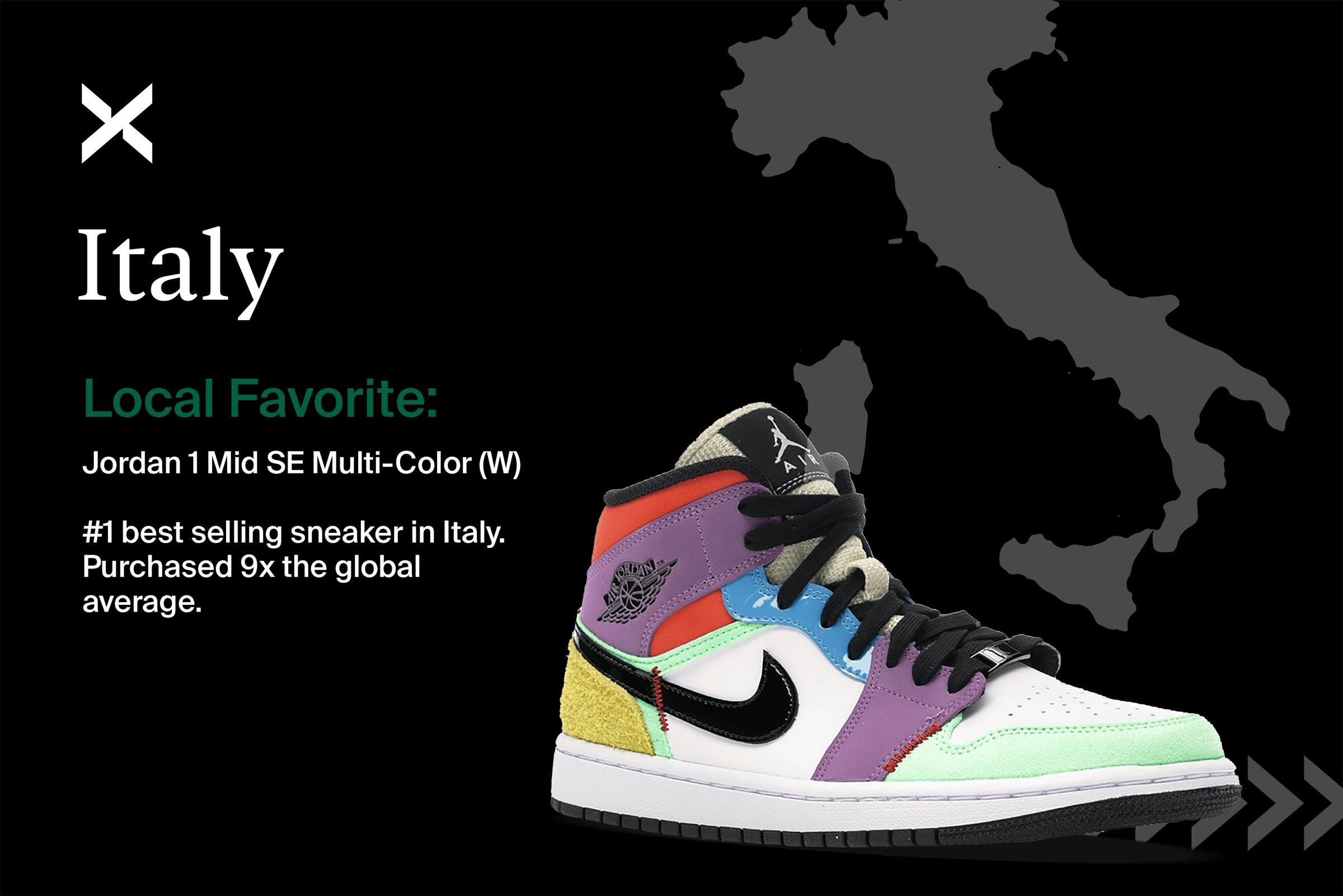
Slightly Worse for Wear
@_nitacollection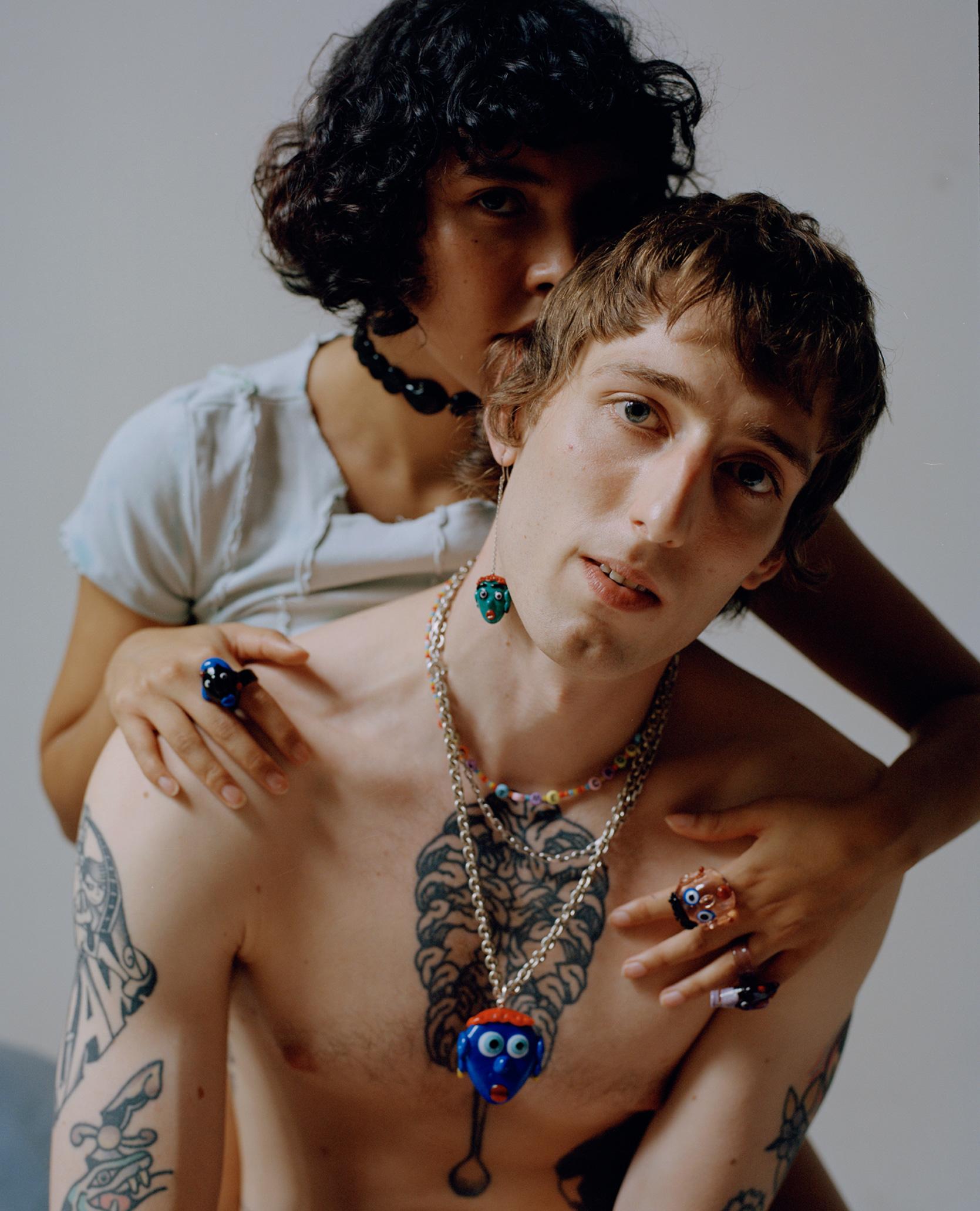
Photo credit: @beadegiacomo
My name is Nicoló, but my oldest friends call me Schniko. I’m currently based in Milan. After studying industrial design at Central Saint Martins I spent the last 20 years developing a visual language that translates across the board.
You have been living all around the world as an artist, what made you move back to Milan?
I was in the US, assisting one of my best friends, Christian Rosa, in his LA studio throughout what was to become a 2-year meteoric rise to fame. Which came with all the bells and whistles, if you know what I mean. I had my own section of the studio where I created sculptures and first started working with jewelry, helping a nutcase that went by the name of Snarky. He had fled some US state and was making rings for a swinger tent at the Burning Man Festival. Until LA I’d focused on lighting and furniture. It then suddenly dawned on me that Northern Italy, and Milan in particular, was simply the best place to live in to explore all these things at once. So I came here. From leather to wood, to metal, to any type of artisan or industrial manufacturing process or finished product you can imagine, the northern part of Italy has developed into a tightly knit network of towns specializing in the production of a particular item. Such as Frosolone, the “city of knives”; or even becoming actual brand names such as Burago di Molgora, Burago, the historical manufacturer of toy model cars.
Are there any particular places in Milan you draw inspiration from for your art?
On the whole, what attracts me to Milan is its patchwork nature. You walk around and have no idea what’s behind the next corner. The buildings, the people, the food. It’s all there waiting to jump out in front of you. It feels like if it exists, it’s here in Milan, more skillfully made and better looking than anywhere else. This allows me to be inspired by the contemporary world, taking cues from sculpture, architecture, art, and urban culture and reshuffling them all into whatever comes out, whether it be utilitarian or more abstract. I suppose it also reflects my deconstructivist approach in which I take very different elements, break them down and reassemble them into something else. When the outcome surprises even me, I know I’m onto something. It’s the way I’d like to describe the world around us. Thoughts, philosophies and ideas manifested in a combination of raw elements put together to create form and function in a variety of different ways. So everyone can have access to new ideas and form opinions about them. That’s progress.
You have recently launched your jewelry collection. Please tell us a bit more about the concept behind it.
Yes, the Unity Collection, designed in collaboration with Kenneth Ize aims to push Nita (the jewelry and Home designs brand that carries my name) beyond its foundational use of primary architectural shapes into vibrant representations of the human race that subvert classifications — specifically of gender and culture — by overtly celebrating individuality and community. Specifically, 12 different representations glorify the organic power of diversity. The glass faces that anchor the line are boldly distinct and at the same time the collection itself honors the unique styles of its two designers: Ize and Nita founder Nicolo Taliani. While these styles are united within the collection, each retains its creative DNA, underscoring the ideal of unity, celebrating rather than expunging our differences. The Unity Collection is an aesthetic departure for Nita, its artistic philosophy directly aligns with the studio’s prior works. The collection inherently blurs disciplinary bounds by combining industrial and fashion design, as well as fine and applied art. Its designs take inspiration from paintings, yet they are executed in glass and this medium’s inherently singular essence: no two glass products are alike, just as no two people are the same.
Most importantly, the best spot to grab a drink in Milan?
The best spot to grab a drink has to be the . I once went in on a Thursday afternoon for an aperitivo and ended up coming out slightly worse for wear on Monday morning. Not sure I recommend that experience though. Perhaps just have a few and go home.
Skating Milan
By Joy Awosika
@joyawosika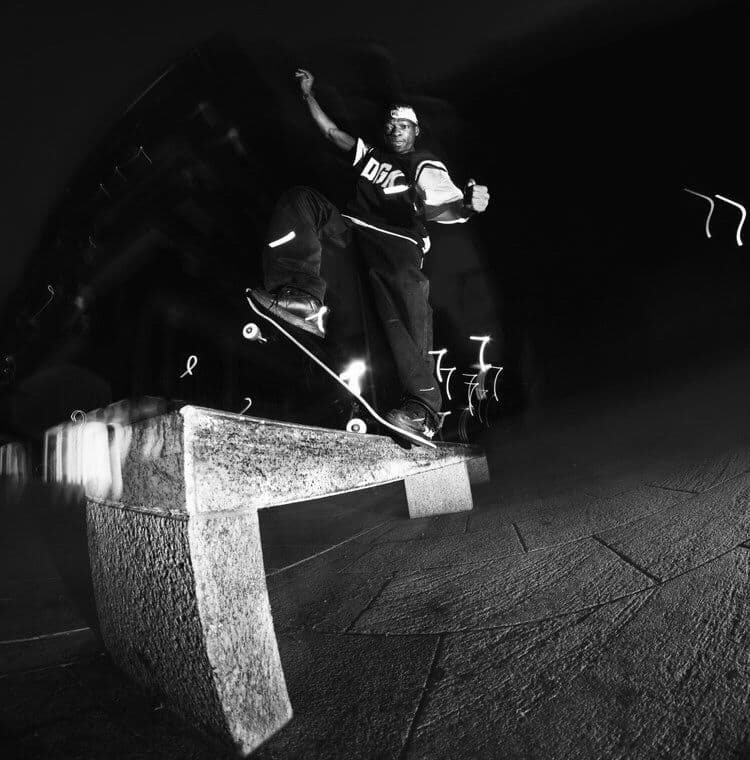
Photo credit: @on_the_dole_joel
Hello everyone my name is Humanjoy, but I always introduce myself as Joy I am of Nigerian origin. However, I was born and raised in Milan and I’m a skater. I started skating on my birthday when I asked for one as a present. I do not know for what reason, but from then I have never stopped hoping that in the future skateboarding will become my profession!
You’re a passionate skateboarder. What do you think about the skate scene in Milan?
The skate scene in Milan is weird; in my opinion, it still has to take shape. In fact, it’s still too early to talk about it, because it’s always changing, and brands come and go. Even if the brands don’t make the scene they are still important. There are a lot fewer people skating today compared to when I started. From a certain point of view, the scene is growing because you can see Milan in more skate videos and there are some brands and shops that support skateboarders. On the other hand, because there are fewer people there are also fewer groups and maybe it would be better to have more people in sessions to have fun with.
What are your top 3 songs when skateboarding?
It’s Ok (One Blood) – The Game
Faneto – Chief Keef
CT Experience – DJ Crazy Toones
How do you perceive youth culture in Milan? How does it differ from other metropolitans like London or Paris?
I think young people around Europe are already focused and motivated in pushing their arts and cultures. In Italy, new cultures and ways of expression are developing and arriving. I personally have friends who are carrying out innovative and artistic projects for the present generation.
What or who do you think represents Milan?
I believe that Milan is represented by young people because, in my opinion, we are the ones who fill the city with different arts, passions and cultures. Milan is constantly growing and evolving, just like young people, and young people are the future.
If you could change one thing about Milan, what would it be?
Milan in my opinion is perfect. I would change the fact that people have to accept that skateboarding is a culture and I don’t skate to ruin the city, but because I have fun and it’s what I do. In general, Milan lacks skate culture, but with time it’s getting noticed, and a couple more spots wouldn’t hurt either, haha. Milan is a city in constant evolution, so spots come and go!
What are your favorite spots in Milan to hang out or be inspired? What do you like about them?
My favorite spot to skate in Milan is a plaza located in Gratosoglio where I started skating for the first time. With my friends, however, I often go out to the central area of Milan and towards the Navigli where there are clubs or places where they organize evenings with rappers and artists of all kinds. Even if in reality I skate all over Milan, I’m always around!
Milan's Evolution
@sprintmilano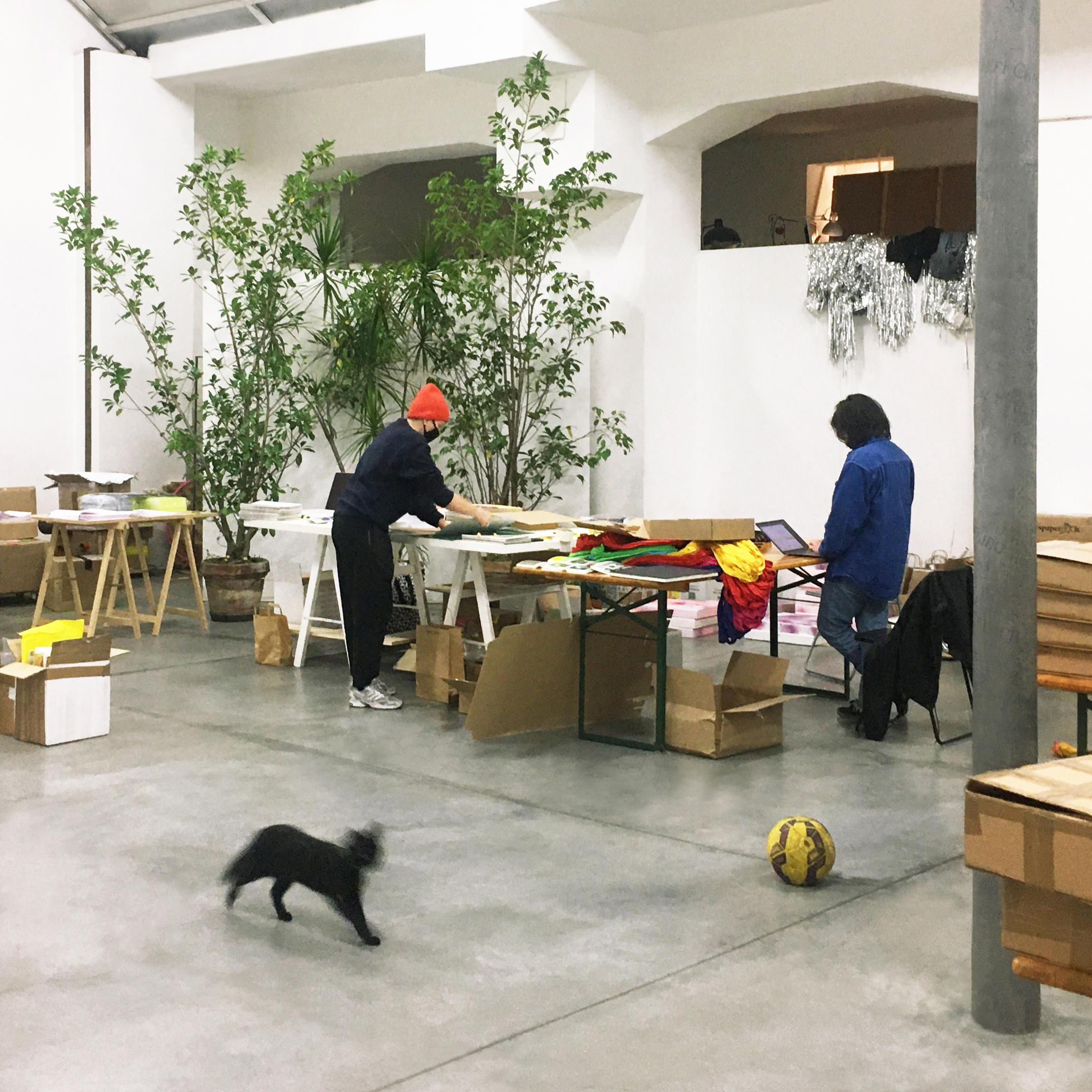
I moved to Milan from a small village in a Piemontese valley after years of intense action in the hip-hop scene, painting trains at night with my co-writer Blef under the name of ‘Duo Dinamico’. I inaugurated the first edition of SPRINT—Independent Publishers and Artists’ Books non-profit fair, that combines Sara’s and my interest in publishing. Since 2018 SPRINT has collaborated with Spazio Maiocchi. As far as the present is concerned, besides the ongoing publishing fair, I’m mainly focussing on my artistic and research practice, hoping to get back to dancing in clubs soon!
Milan’s cultural landscape has changed a lot over the years and you have lived through them. What were the most drastic changes you experienced, positive and negative?
I can definitely say that Milan has changed a lot during the years. A positive turning point for me was to get in contact with people of a younger generation than mine who I found has a softer approach to the cultural system and its accelerated capitalism and a dialogue-driven attitude towards real-life issues that were once often considered taboo by my peers and the art system itself. This widespread and more conscious attitude has recently led to the establishment of Art Workers Italy, the first association for the protection of visual and contemporary art workers’ rights. On the other hand, the city of Milan has seen some negative changes over time. I think of the ‘YES Milano campaign’ and its pejorative dynamics, reducing the cultural offer to thematic ‘weeks’ – often overlaid with a bulimic catalog of possibilities scattered around the territory and condensed in a fast and furious random activation.
For Sprint you work a lot with international authors. How do they perceive Milan and its cultural scene?
I believe it’s a real discovery for them. It’s as if this territory has finally become real and not just a point on the map. Even though the days of the SPRINT Art Book Fair are hectic, they still have the opportunity to feel the charm of the city – and in particular of the Porta Venezia neighborhood where the fair is located. During the event, they are able to have a direct exchange with the locals and this opportunity sometimes creates bonds that last over time.
With the collective TOMBOYSDON’TCRY you’re active in the queer space. How do you feel about the queer scene in Milan? Are there enough opportunities for people to express themselves freely?
At the institutional level, Milan, like Italy, does not display signs of true integration to the queer community, which has to carve out its own social, professional and emotional space, while being exploited as an economic target or façade without an understanding of their real needs. This ranges from the legal rights, lack of equity and intersectionality, to a wider perspective, related to work, migration, dynamics of citizenship [see Jus soli] and generally the protection of the most vulnerable, with whom we all fall under a large umbrella. In practice, the real difference made in Milan is by people who move to this city seeking a similar outcome of independence and acceptance, in contrast to the provincial mentality of the area from which a lot of people come. There are some places that can help to make you feel good – I’m thinking of the lesbian bar or a sneak peek at the queer bookshop . A bigger city of course represents a cultural openness and sometimes does make a difference, but it’s also important to remember that it is a small portion of the wider and more complex reality…
You have been involved in the cultural landscape from a very young age. Did you have to overcome many milestones to follow your passion? What tips can you give to other young creatives?
To be completely honest, in my life things have often happened by chance. I advise you to be very honest with yourself about personal strengths and weaknesses. Do not let failures make you want to give up because often it is a matter of luck: be tenacious, take risks and achieve what you desire.
Then I really believe that a bit of a laugh will save us all!
Starting Over
By 2050+
@2050.plus
2050+ is an interdisciplinary agency that works across design, technology, the environment, and politics. Website: https://www.2050.plus/
How can Milan’s urban planning change in the next twenty years?
Starting with an expanded, richer and more nuanced definition of the city and of its inhabitants. Most public investments still follow the obsolete logic of the “centric city”, which assumes a clear hierarchical relationship between the center and the suburbs. Our condition however points towards the concept of “city-archipelago”: a complex network in which different visions of society, ecology, and the meaning of citizenship meet (and sometimes collide). Milan is the unstable and ever-changing result of this continuous mediation and negotiation between conflicting interests. The urban planning of tomorrow must take this paradigm shift into account, and react accordingly.
In concrete terms, this new attitude must be applied to the way in which we conceive movement (it is necessary to focus on the gradual abandonment of fossil fuels, by virtue of transport systems that use renewable energy); and the relationship between urban space and “wilderness” (connection systems are needed between the green areas of the city, which are for the most part disconnected, without easily accessible gateways).
What are the main problems in Milan today and what solutions can be envisioned?
Milan is an area characterized by frictions: from increasingly violent gentrifying pressures to pollution, to shortsighted policies addressing the presence of migrants in the city – just to name a few.
One of the flaws that have recently emerged, especially during the lock-down, is the gradual loss of opportunities to relate to the unexpected, to the unknown. For some months now, there have been fewer chances and less space for improvisation and random encounters. Our interactions have crystallized in the pre-pandemic period, without expanding. If “social distancing” seems inevitable for our post-pandemic condition, safe spaces that allow “social rapprochement” remains crucial. Milan needs more “non-codified” spaces, in which individuals can interact spontaneously, without adhering to the requirements of an already written script.
Despite this, the experience of the lockdown left us with an important lesson. When we were forced into the perimeters of our homes, the functions of the domestic environment were amplified: from personal territory, a prerogative of the intimate sphere … to an all-encompassing space, capable of reinventing itself to accommodate work, study, escapism, sport. The same versatility of the domestic space that we experienced during the lockdown could inspire the proliferation of “uncoded” places within the urban space: roofs, hallways, shared gardens…
Should Milan start over?
In the context of Milan, “start again” means not only healing the wound opened by the lockdown; but also using this moment of forced introspection to unhinge certain consolidated dynamics, and to move the bar higher than possible. Our research on Milan led us to discover that the beating heart of the post-pandemic city is not a single circumscribed place, but a complex and constantly changing cartography made up of liminal spaces defined by the individuals who populate them. Fluid communities of delivery riders, arbonauti, street dancers, people who do not recognize themselves in the rigid boundaries of a discipline, but who draw their inspiration from interstitial spaces and from the contamination between practices. These actresses and actors are the interlocutors from which Milan has to start again.
Are there worldwide virtuous examples for city management and planning that Milan should be inspired by?
In an article published almost one year ago, Paul B. Preciado talks about the striking failure that all the great urban realities – from Paris to London, to New York, to Milan, of course – have experienced during the pandemic. “Come back, come back soon from your holidays less than a hundred kilometers from home, run to your place with the mask hanging from your wrist, like a bracelet that disperses the virus. You would have liked to go to a desert island in the middle of the sea, very far away, to a place where neither Lampedusa nor Calais can be seen. Instead, you were forced to stay in Normandy. And now Normandy seems further away from Paris than ever. Return to your cities, return to their pollution and their noise, before your lungs and ears get used to the symphony of the countryside. Return to the labyrinths of the subway. Start over and have interminable meetings. (…)” (Libération, 21.09.20)
Inspired by Preciado’s words, and in contrast to the dominant trend, we do not turn our attention to large foreign global cities, but rather to a smaller reality, relatively close to us: Palermo. Palermo has a complex and articulated urban fabric, towards which a series of contradictory forces converge: from the simultaneous impact of international mass tourism and migratory flows to illicit trafficking to the economic impasse that has always characterized the south of Italy.
In 2018, when Palermo hosted manifest 12, the city demonstrated that it was able to host an artistic event of international renown, without disregarding its identity. The multifaceted nature of Palermo was able to coexist with the program of the Garibaldi Theater and the Botanical
Garden (the focal center of Manifesta 12), with the local realities of Ballarò and Vucciria. The artistic initiative took place without excluding peripheral areas such as ZEN 2 and Acqua dei Corsari from this choral discussion.
Shoutout to Dipset
By Juan Pozo
@juanter.s.thompson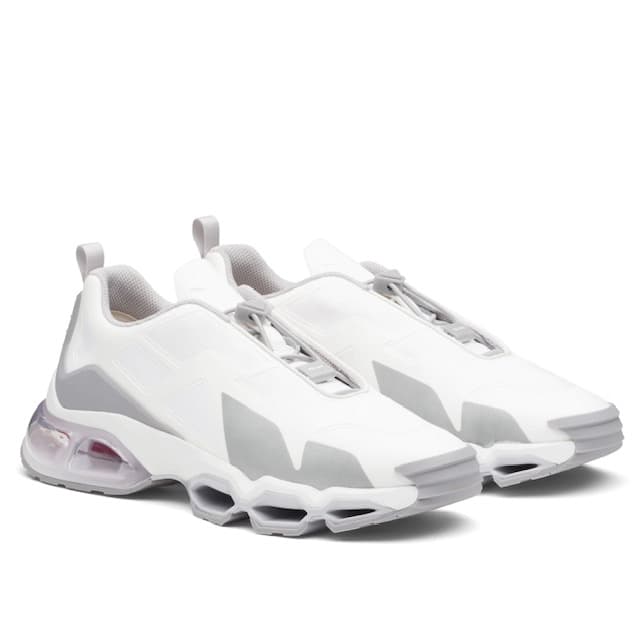
I’m an American living and working in Milan. I moved here to work after living in NYC for 12 years. My passion I guess is design and art in general, but mostly sneakers. I’m currently a men’s shoe designer working with Prada Linea Rossa.
How did your passion for sneakers come about?
It’s hard to pinpoint, but in general, I think my dad had some decent taste when he used to shop for me as a small kid; there are some great photos of me in Reebok Pumps and Nike Flight 89s. My earliest memories of being interested in design I think come from playing football and being obsessed with the original silver/blue Nike R9 for Ronaldo. I also remember having the original Air Max Plus III in black and red and I would stare at all the details and the little bits of reflective material. And then there’s hip hop, and the trips I used to take in the summers up to the NY/New Jersey area. Here I bought my first all-white Air Force Ones, which I couldn’t find where I grew up in the middle of Florida.
Currently, you design sneakers for a luxury brand. How do you think the perception of sneakers differs between the sneakerhead and the traditional luxury consumer?
The majority of luxury consumers are wealthy materialists who like to feel better about themselves by buying shit. The rest are people with great taste that can appreciate cutting-edge design. A sneakerhead to me is a kid who would rock anything from any brand and is only interested in their own feelings about specific products, regardless of hype or Instagram, etc.
Where do you draw inspiration from when designing?
Shapes. When I sketch, I’m looking for something that hits me on some type of level. Is it aggressive, does it look sleek, or fast? It’s like looking at cars for me, some have beautiful aggressive stances and some look clunky and slow. The ones that stick out to me give me that involuntary Jay-Z face when he hears a beat that clicks.
How does the sneaker scene in Milan differ from the one in the US?
The US has more accessibility, alone the range of different places where you can find stuff, and especially in NYC where sneakers have simply been part of the culture since the likes of Run DMC or even before. It’s hip hop. Milan has a burgeoning scene; there are a few really great shops where you can find some gems. I haven’t been here long enough to elaborate more than that, but I know there’s plenty of equally passionate people in this city that could say more.
What’s your all-time favorite sneaker model and why?
Nike Air Force Ones before they started making them out of cardboard. Shoutout to Dipset.


